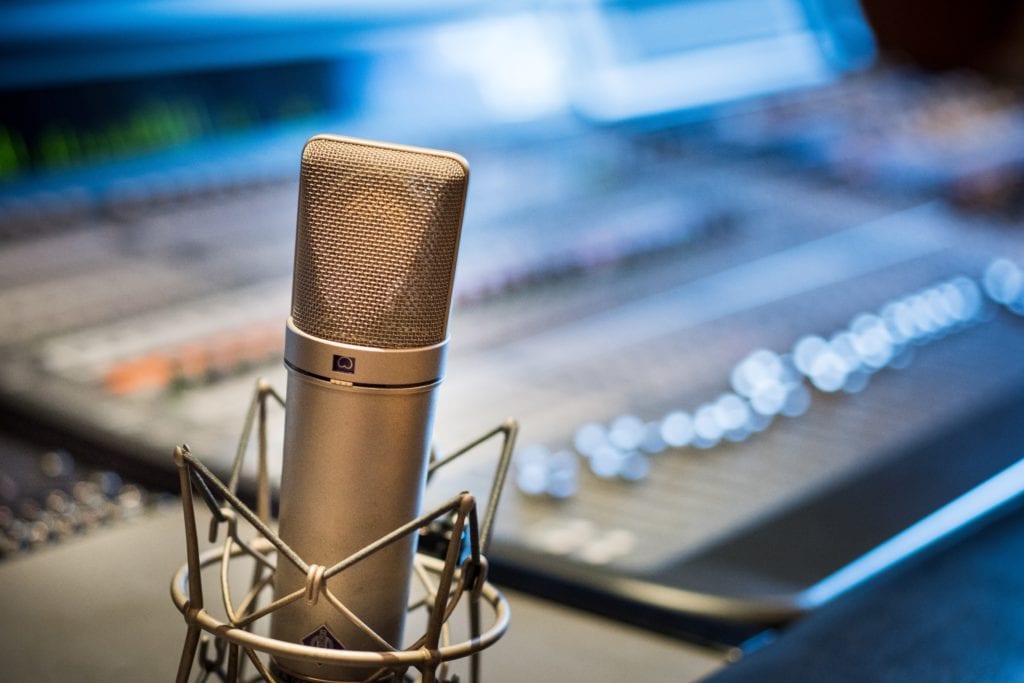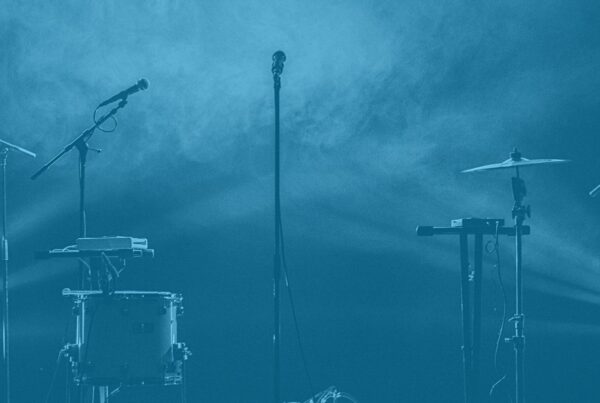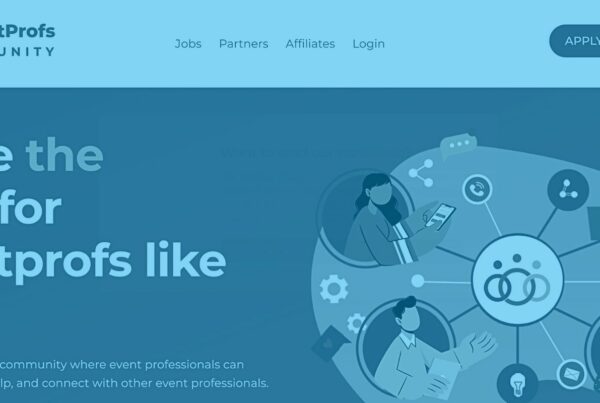Is this Catchbox loud enough? Then perfect, because it’s time for another edition of Event Tech Podcast! We often talk about inclusion and interaction for events. With the advent of technology, we have new tools coming up each day that have a lot of potential. And of course, we’re talking about potential to make your event the best it can be! Catchbox is precisely one of these tools. But are you making the most of it? It’s really easy to jump in the bandwagon of something now. But it’s a completely different thing knowing how to harness all its power to use for your advantage.
Don’t worry – we got you! Joining our spectacular host Brandt Krueger is Mikelis Studers, the CEO of Catchbox. All the way from Latvia, Mikelis will walk us through the story behind the company and how the product came to be. But most importantly, Brandt and Mikelis will guide you through all the features of Catchbox. This way, you’ll learn exactly how you can make the most of it. Amp up the volume, it’s Event Tech Podcast time!
Click here for the full audio transcription.
Catchbox – The Beginning
The genesis of the product lies in the realization of a problem. Mikelis explains that “we really noticed the technical problem there, that the current tools that were used for giving everyone turn to speak were really outdated and really clumsy”. And hence, an idea was born! “It really is a story of from zero to something, we really didn’t have any kind of specific background experience in events or in the engagement of that sort. Nothing apart from just a willingness to work out some technical products and turn it into something very useful”, he explains.
Throwing It Around
Obviously, one of the most distinguishable features of Catchbox is throwing. But how did this idea even come about? “It just sounded such an absurd idea of too many sorts”, recalls Mikelis. “First of all, how could you throw a microphone, right? So immediately there are so many limitations that just would not let that happen technically. Then we found out also cultural challenges and we’re still challenged by that today. How would people accept that kind of behavior? How do you use that kind of tool?”.
They first had to figure out the internal aspect of it. “We had to involve several sensors and write some codes that run inside the microphone all the time. It basically checks the state of the movement and cuts off the sound when necessary. Then the sound comes back on, whenever it is in the normal state”.
The Best Practices
“Surely you need to have a clear goal of what you’re trying to do”, begins Mikelis. He sees great potential when it comes to Catchbox, and the moments it can create. “Those moments when anyone has questions and there’s that short moment when nobody does, but I’m 100% that so many people could comment, could contribute, could give their idea. Their inputs for everyone to grow a little bit higher in reaching the common goal. This is where Catchbox comes handy, and it could be really an icebreaker and have that moment. Give that spark where those ideas could flourish really being told to everyone around”.
Branding And Explaining
Catchbox has this great feature that allows you to customize to your company or brand. And this actually an important first step of adoption. “If it’s the first time you’re now getting the Catchbox, you get it branded, it’s in your company’s colors, it’s already like a part of your company. So you’re already bringing in your corporate branding, and that’s really one of the goals to blend in to deliver where it belongs to that company”, Mikelis says.
“I think it starts really with a good introduction, and it takes approximately 10 seconds to show. You know guys this is a microphone, you can throw it, and it’s soft. It’s not going to hurt anyone even if it hits somebody in the head, no problem with that. Then just showing that whoever gets the Catchbox gets to speak up, and then doing that thoroughly”, he explains further.
Using Catchbox
Let’s take our minds off from big corporate events for a second and further explore the uses of this awesome tool. For instance, as Brandt puts it, “this isn’t just for big events, so we can bring it down smaller and smaller and smaller. And I’ve seen it used very effectively in small groups, where you’re talking about a board room size thing, and rather than having to set a microphone at every station for a meeting. Or having a single or two microphones that have to be passed around from person to person just to get a word in edgewise. It’s really effective as just here, chuck it across the room, and it speeds the conversation up, and it makes it, again, just a little bit more fun”.
And that’s not all! In events, “anytime you’re recording or live streaming, anything you can do to increase the likelihood that those questions are going to be sent into a microphone and then sent either to the live stream or to the recorder is enormously helpful”. And Catchbox makes this a reality.
Bringing Tools Together
Brandt also raises a pretty good point: “Nothing’s perfect, you’re never going to get someone who is truly an introvert to ask their questions. When you combine it with some other audience engagement technology, whether that’s a mobile app where you can ask anonymous questions or the two microphones. So it’s okay to have those other technologies in addition to the Catchbox to again increase the likelihood that you’re going to be able to hear from everyone”. Just remember the importance of bringing people together and having several things to pull from your toolkit!
Customizing Is Important
“When getting the Catchbox, customize it to fit your own brand or event theme”, advises Mikelis. “It definitely comes down to thinking a little bit about the company culture or the organizational culture. What you will get is reinforced group feeling, the group cohesion. Because they’re sharing the mic or sharing the Catchbox around like throwing or passing it hand-to-hand. It’s like an act of a group coming together and doing something together”.
“I think the Catchbox is a perfect tool if you want to change your company culture towards that, or your organizational culture towards that, towards sharing, towards more fun”, he adds.
Beyond Catchbox
The company hasn’t been relaxing since the product was introduced to the public! Let’s talk upgrades.
Catchbox Plus
“Our work is about understanding how the product can be also integrated into the technologies that organizations use these days”, explains Mikelis. “Our latest product is called Catchbox plus, and this is one of the products that target versatility. In environments like corporations, you see a trend of less and less maintenance. Like scalability, and sometimes also cutting costs, you need to get to a point where there’s zero maintenance set up. This really comes possible with Catchbox Plus because you just have the wireless charger pad”.
The Presenter Mic
“Another handy accessory for the same Catchbox Plus line is the Presenter mic”, continues Mikelis. “It’s basically a belt pack mic, belt pack, form factor of a microphone. And it also has a built-in microphone, so you can use it as audio enhancement device, audio reinforcement. You just use it that way and then it can connect simultaneously two of the microphones to the same receiver. In this case, you can have a throwable microphone for the audience, and then the Presenter mic for the person in front, be it the educator, be it a teacher, professor, presenter, trainer, speaker, anyone”. Neat!
The Simplicity
“Our design philosophy is really to have only the things that are necessary”, explains Mikelis. From the outside, there is no buttons, there is no on, off, volume. For the user it’s really pick and go, just pick it up and speak. And similarly for the wireless charger it’s just that. You put it on it, and it’s this dedicated design, really beautiful. And then it just shows you how much the batteries have been charged, and that’s it. There’s no audio on, off thing, you pick it up”.
Exploring The Future
So, what does the future hold for Catchbox? On Mikelis side, “we’re really going towards easier and easier integrations. We’re talking things about like networking, remote monitoring device, which looks very interesting. Just things we’re looking into, and obviously also the sound itself, and making it more suitable for meeting rooms and things like that”.
“We have this kind of portfolio that tries to cover as much as possible, from the existing industry standpoint, and then developing each of those lines like even deeper”.
Conclusions
And that does it for this week’s episode of Event Tech Podcast! Hopefully, now you are fully equipped to make the most out of your Catchbox. Remember to tune in next week for a brand new edition covering all things event tech!












